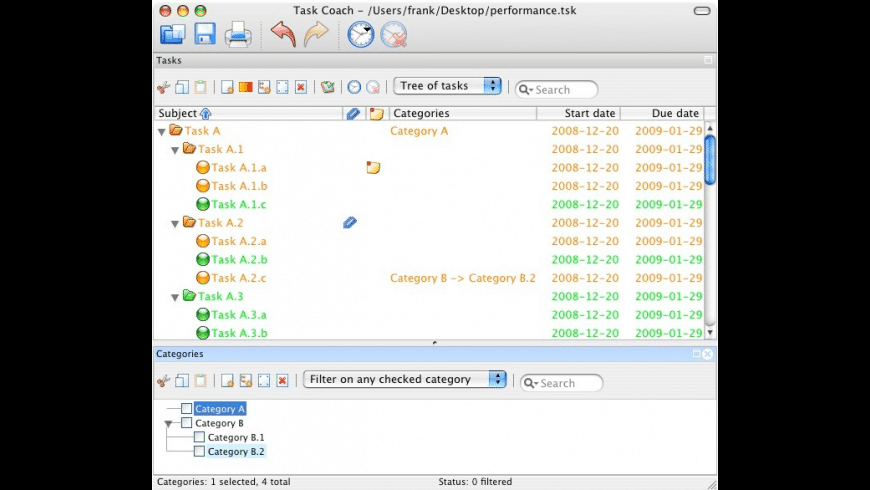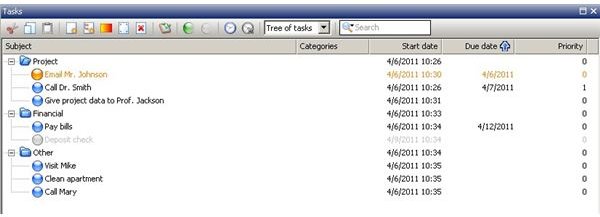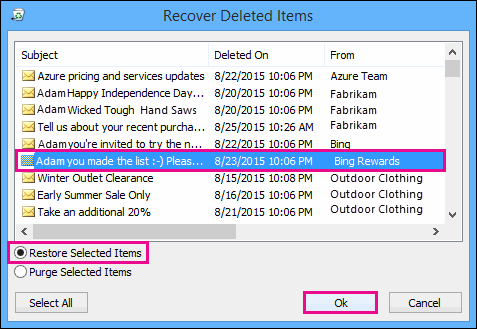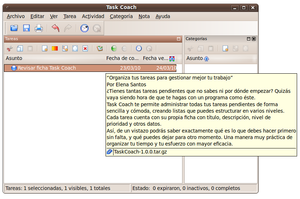

- Recover task coach deleted tasks full version#
- Recover task coach deleted tasks archive#
- Recover task coach deleted tasks code#
Manage and edit your scripts outside the Code Editor, or sync them with an external Repositories can be accessed using Git, so you can Icon following the repo name in the Script Manager. PreviouslyĪccepted repositories can be hidden by clicking the block Note that if you share a repository, the person with whom you're sharing will need toĪccept the repository by clicking the link shown in the settings dialog. To configure access to a repository,Ĭlick the settings icon next to the repository name. To delete a repository, click theĭelete icon. History icon next to a script or repository toĬompare or revert it to an older version.
Recover task coach deleted tasks full version#
Script to another repository, it gets copied.Īll scripts and repositories maintain full version history. Scripts and organize them into folders using drag and drop (Figure 2). You can rename scripts with the edit iconĪnd delete them with the delete icon. Repository in the Owner folder or to create folders and files within a Scripts using the filter bar at the top of the Scripts tab. Owner from an older version of the Script Manager. Legacy repositories to which you have access but have not yet been migrated by their The Examples folder is a special repository managedīy Google which contains code samples. The Reader folder are repositories for which read access has been granted Their owner) the repositories in the Writer folder. YouĬan add new scripts to, modify existing scripts in, or change access to (you may not remove The repositories in the Writerįolder are repositories for which write access has been granted to you by their owner. You (and only you) have access to the repositories in the Owner folder Repository you own in the Owner folder: users/username/default. Repositories are arranged by access level, with your private scripts stored in a Scripts in Git repositories hosted by Google. The Script Manager stores private, shared and example The Scripts tab is next to the API Docs in the left panel of the CodeĮditor. The documentation can be searched and browsedįrom the Docs tab.

The complete JavaScript API documentation. On the left side of the Code Editor is the Docs tab, which contains Language features introduced in ECMAScript 6 (ES6)Īnd above are not supported at this time. Specification of the JavaScript language. Note: The editor supports most features of ECMAScript 5 (ES5), a standardized This link represents the code in the editor at the time the button was pressed. Link button is pressed, a unique link will appear in the browser’s addressīar. The output map and console, and getting a link to the script.

All you need to run the CodeĮditor is a web browser (use Google Chrome forīest results) and an internet connection. Scripts you develop in the Code Editor are sent to Googleįor processing and the generated map tiles and/or messages are sent back for display in Share a unique URL to your script with collaborators and friends with the Query objects placed on the map with the Inspector tab.ĭisplay and chart numeric results using the Google VisualizationĪPI. View example scripts or save your own scripts on the Scripts The Code Editor has a variety of features to help you take advantage of the Earth EngineĪPI. Diagram of components of the Earth Engine Code Editor at
Recover task coach deleted tasks archive#
Search of the data archive or saved scriptsįigure 1.Task Manager (Tasks tab) to handle long-running queries.Map display for visualizing geospatial datasets.The Code Editor has theįollowing elements (illustrated in Figure 1):

To make developing complex geospatial workflows fast and easy. Is a web-based IDE for the Earth Engine JavaScript API.


 0 kommentar(er)
0 kommentar(er)
